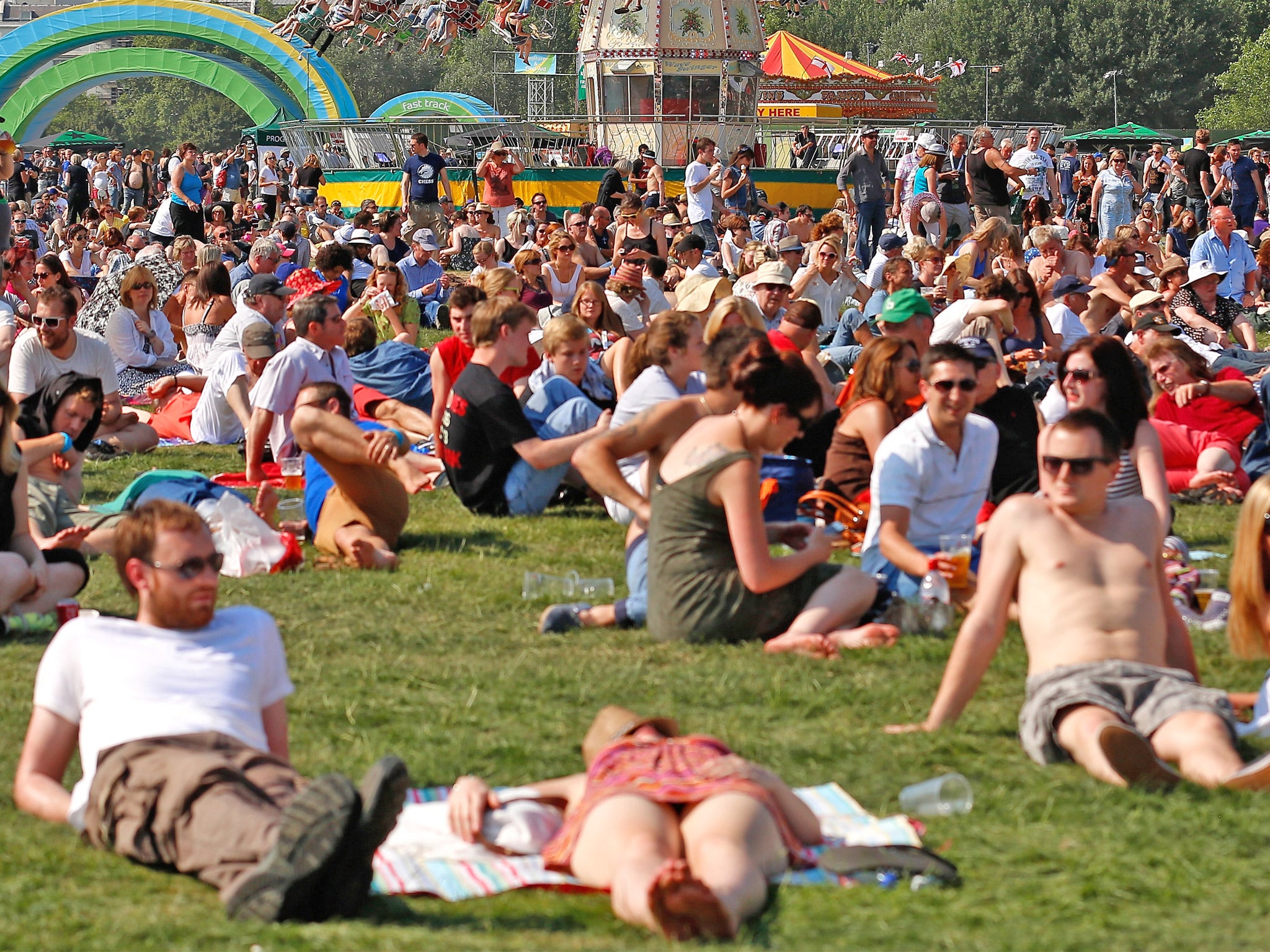Fields of dreams with pagan roots: Before festivals became boutique, they were wild affairs
Festivals are nothing new, despite their contemporary popularity. From the extraordinary eruptions of outdoor religious revival gatherings to vegetarian, teetotal, anti-vaccinationist rallies, Philip Hoare charts their history

Your support helps us to tell the story
From reproductive rights to climate change to Big Tech, The Independent is on the ground when the story is developing. Whether it's investigating the financials of Elon Musk's pro-Trump PAC or producing our latest documentary, 'The A Word', which shines a light on the American women fighting for reproductive rights, we know how important it is to parse out the facts from the messaging.
At such a critical moment in US history, we need reporters on the ground. Your donation allows us to keep sending journalists to speak to both sides of the story.
The Independent is trusted by Americans across the entire political spectrum. And unlike many other quality news outlets, we choose not to lock Americans out of our reporting and analysis with paywalls. We believe quality journalism should be available to everyone, paid for by those who can afford it.
Your support makes all the difference.Festivals are bigger than ever, even as they aspire to "boutique" status. Last weekend I appeared at two – from a tent with crushed velvet haystacks for seats at Oxfordshire's Wilderness Festival, decoratively strewn in the grounds of Cornbury Park, to the city-wide extravaganza of the Edinburgh Fringe, where I found myself in a New Town drawing room drinking gin with Alasdair Gray, laughing uproariously at his own uproarious, anarchic view of the world, and listening to Dan Cruikshank's impromptu architectural lectures on the gas lamps outside.
Meanwhile, in a quiet pub round the corner, Ian Rankin was complaining about all the crowds. And as I returned south, the plane flew over the rural outskirts of Winchester, I looked down on a vast new temporary settlement that had sprung up, the teeming crowds and tents of the appropriately-named BoomTown Fair festival, self-proclaimed as "UK's maddest pop-up city" with its own invented "town history".
Festivals are nothing new, despite their contemporary popularity. In their own way, they're race memories of remote pagan rituals, or of more recent gatherings. In 19th-century America, from the Appalachians to New England's Cape Cod – the now rarified festival retreat for wealthy New Yorkers – there were extraordinary eruptions of outdoor religious revival gatherings during which huge camp sites were set up for six-day festivals of preaching and singing, day and night.
They were counterpointed at the same time by similar gatherings in England, from vegetarian, teetotal, anti-vaccinationist rallies in Manchester, to the non-conformist conventions held in the genteel, rolling grounds of Broadlands House in Hampshire, where the owners, Lord and Lady Mount Temple, aristocratic patrons of the Pre-Raphaelites, spiritualist mediums and former slaves, confirmed to Marx and Engels' 1848 critique of "Conservative or Bourgeois socialism", as "philanthropists, humanitarians, improvers of the condition of the working class, organisers of charity, members of societies for the prevention of cruelty to animals, temperance fanatics, hole-and-corner reformers… desirous of redressing social grievances in order to secure the continued existence of bourgeois society".
Indeed, one of the Mount Temples' lost causes was that of the New Forest Shakers, a sect of religious communists – 170 men with long hair and women clad in bloomers – led by Mary Ann Girling, an illiterate farmer's daughter, female Christ and stigmatic. Girling offered her followers immortality and a glimpse of the Second Coming from a soggy field in the New Forest, from where, in 1874, they were infamously evicted and resorted to living, with their furniture and goods, along the roadside like latterday New Age travellers, their plight reported in all the newspapers of the day.
The Shakers' story was an augury, in its way, of the festival-edge confrontations of the 1980s (which themselves would merge with rave culture), culminating in the notorious Battle of the Beanfield on 1 June 1985 when, as writer Ian Sansom records, 1,000 police officers smashed up the peace convoy in Savernake Forest, striking women with babes in arms and leaving burning caravans behind.
What a contrast to the current bourgeois appeal of festivals – for all that they propose their own temporary utopias, an alternative regrouping of communal spirit outside ordinary society and scheduled time. People who spend their lives never knowing their neighbours' names end up wandering about in states of semi-nakedness channelling their inner hippy.
But these evanescent events, mere summer butterflies, are far from the anarchy of early Glastonbury or the Isle of Wight festivals. Nowadays you're as likely to find stalls purveying the latest gastro-sensations from London's pop-up eateries as a plate of lentil curry.
Join our commenting forum
Join thought-provoking conversations, follow other Independent readers and see their replies
Comments